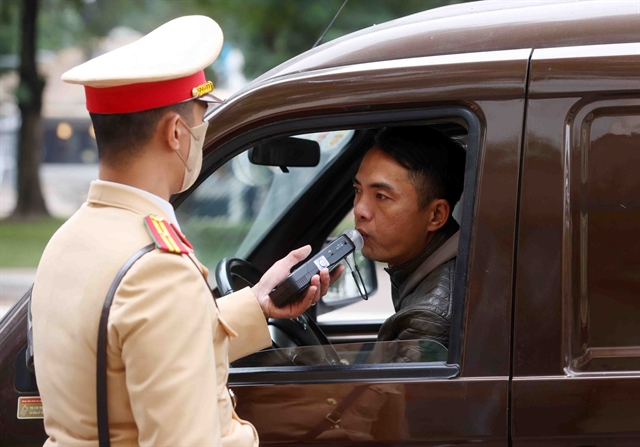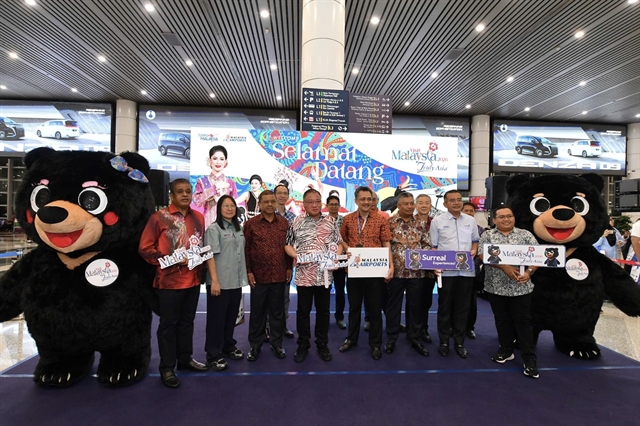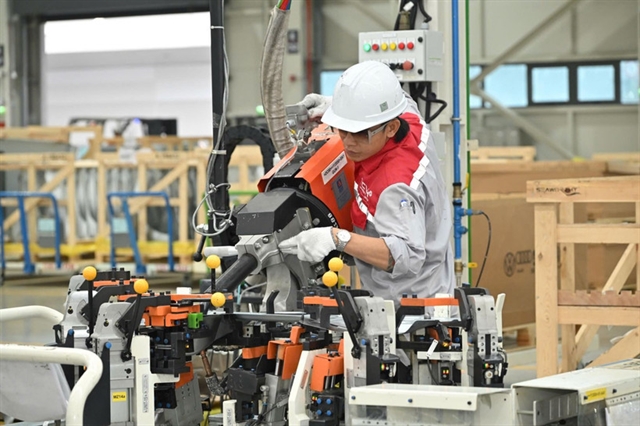 Society
Society


|
| Fishermen learn how to use vessel monitoring devices in Quảng Trị Province. Photo sonongnghiepquangtri.gov.vn |
Trần Tố Như
HÀ NỘI — While using technology to supervise fishing vessel operations has proven an effective way to manage fisheries in Việt Nam, several localities are struggling to use the technology, experts have said.
The southernmost province of Cà Mau is an example.
With 254km of coast, the province has abundant fishery resources and a large fishing industry.
Nguyễn Việt Triều, head of the Fisheries Sub-department of Cà Mau, said the province has strictly followed the Government’s regulation that fishing vessels longer than 15m must have a vessel monitoring system (VMS) installed by April this year.
By the end of last year, VMS had been equipped on 70 per cent of fishing vessels longer than 15m and nearly 90 per cent of vessels longer than 24m, he said.
Since 2018, there have been 31 cases of Vietnamese boats being detained for intruding into the waters of other countries.
By installing VMS, the number of vessels that have sailed into other countries’ waters has been on the decline.
However, he said, it was difficult to analyse data from the monitoring device because a fishing vessel uses 3-4 kinds of software, suggesting they should be integrated into one.
In the central province of Quảng Trị, there is another problem.
Although local fishermen know installing VMS is necessary, only 55 out of 363 vessels between 15 and 24m have VMS installed.
In the meantime, Movimar satellite navigation has installed on all ships longer than 24m.
This is because owners of ships longer than 24m received support from the State while others didn’t, said Nguyễn Hoài Nam, head of the Fisheries Sub-department of Quảng Trị, adding that not every fisherman can afford equipment that costs VNĐ20-25 million (US$853-1,060).
Phan Văn Quang, who resides in Gio Linh District, said he was satisfied with the Vifish.18 monitoring equipment on his vessel.
“This device works stably and transmits signals very well,” he said.
"It not only meets the requirements of automatic messaging via satellite system to the shore station but also helps the shipowner know its exact location,” he said.
“Thanks to these functions, my peers and I feel more secure while fishing offshore,” Quang said.
Capital shortage
Lack of funding is also deferring the installation of vessel monitoring equipment in other provinces, including Nam Định and Hải Phòng.
Nguyễn Thanh Xuân, head of Hải Phòng Fisheries Sub-Department, said only half of the total 419 vessels have VMS installed.
"As marine resources are gradually depleted my family’s income has been seriously affected,” Bùi Văn Tiên, a fisherman from Nam Định Province’s Hải Hậu District.
He said spending about VNĐ20 million to install a vessel monitoring device would leave fishermen like him in financial difficulties, adding that they were struggling to make ends meet.
Jaeyoon Park, a specialist from Global Fishing Watch (GFW), said at a conference late last year in Hà Nội that GFW has implemented fishing vessel management through satellite monitoring and artificial intelligence. The GFW mainly tracks ships through its onboard automatic identification system (AIS) - the GPS-like device - that large ships use to determine their position, identity, route and speed.
AIS technology can detect ships violating foreign waters by infrared and analyse the movements of fishing vessels to know whether they are moving or fishing.
Park said GFW was ready to support Việt Nam in analysing fishing vessel monitoring data, organise training to enhance capacity for information and assist the country in tracing seafood.
Lê Văn Ninh, deputy director-general of the Fisheries Information Centre, under the Directorate of Fisheries, said the centre was supervising the operation of 9,421 fishing boat longer than 15m. It can collect data of vessels nationwide including location, itinerary and warn ships when they go into other countries’ waters. The centre also shares data to localities and agencies for product traceability and for research and rescue activities.
The Directorate of Fisheries has worked with the centre for the Conservation of Marine Life and Community Development (MCD) carry out the initiative on pilot the application of electronic diary as well as information technology in monitoring data for fishing vessels to contribute to the improvement of fisheries management, he said. — VNS




